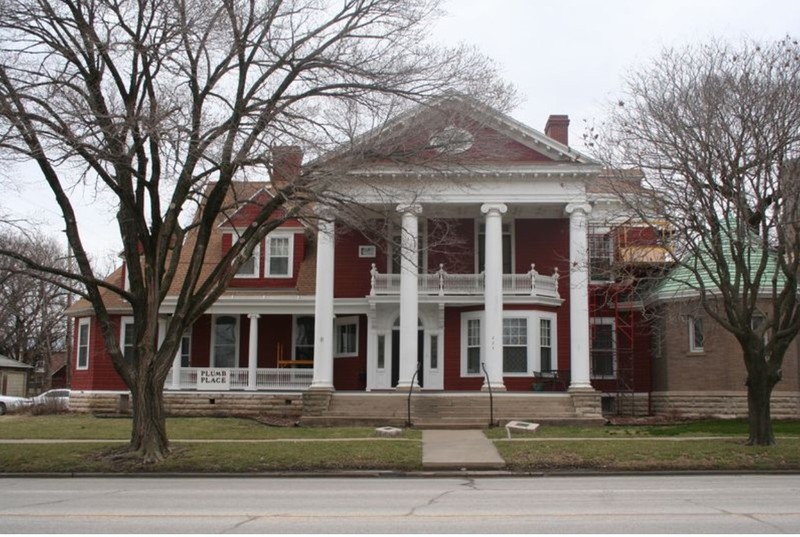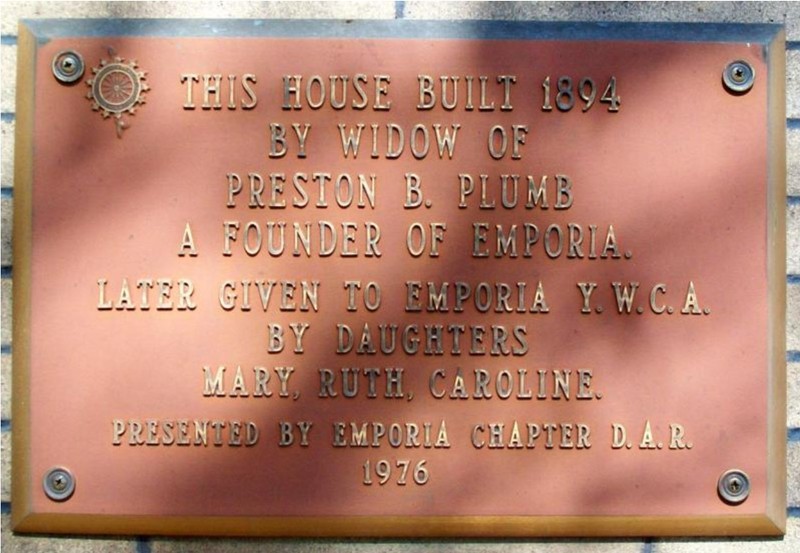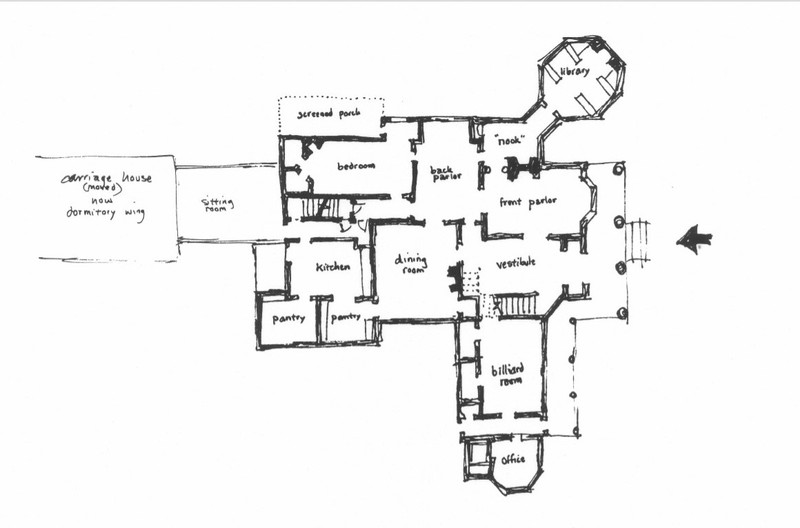Preston and Carrie Plumb House
Introduction
Text-to-speech Audio
Images
South (main) elevation of Preston and Carrie Plumb House in 2010 photograph (KSHS)

1976 DAR plaque on Preston and Carrie Plumb House, photo by William E. Fischer, Jr. in 2011 (KSHS)

South and east elevations of Plumb House plus outbuilding in 2011 photo (William E. Fischer, Jr., KHRI)

Sketch of first floor plan of Plumb House from NRHP nomination (Cawthon 1984)

Backstory and Context
Text-to-speech Audio
Preston Plumb served in the U.S. Senate from Kansas for fourteen years and was a member and speaker of the Kansas House of Representatives. He previously was a reporter for the Kansas Supreme Court. His wife, Carrie Plumb, played a prominent role in the social affairs of Emporia and donated the nearby land where the Emporia Carnegie Library was constructed in 1904. Mrs. Plumb set aside one room in the mansion in 1917 for the Red Cross to make surgical dressings for the war effort.
The original portion of the house, which served as the home of both Senator Plumb and Carrie Plumb, is clad in wood shingles; the later additions by his widow are clad in brick. The Neoclassical style front portico features two-story Ionic columns facing south toward Sixth Avenue supporting a pedimented front entryway topped by a fanlight. The intersecting gabled roof covers an irregular, asymmetrical two-story building with a wrap-around porch to the west of the main porch. The foundation is rough-cut stone. The quirky octagonal building that projects off of the building's northeast corner was designed as a library.
After Carrie Plumb's three daughters - Mary, Ruth and Caroline - inherited the mansion in 1919, they donated it to the National Y.W.C.A. and an Emporia chapter was chartered in 1920 to accept the gift. Their two brothers donated thousands of dollars in order to move the carriage house from the alley and attach it to the north side of the house with a connecting two-story passageway. The passageway provided sitting space and the carriage house was remodeled inside to be used as dormitory space. The house became the Community Center of Lyon County in 1955 when the Y.W.C.A. chapter disbanded. The Community Center used the building as a residence for low-income women.
The Emporia Chapter of the Daughters of the American Revolution affixed a plaque to the house in 1976 to honor Preston Plumb, a founder of Emporia, and his family. The Plumb House was owned by the organization Working Women of Lyon County in 1984 when it was listed in the National Register and the Kansas Historical Places Register. The offices of the Flint Hill Girl Scouts Council occupied the ground floor of the carriage house. The house was primarily significant for its architecture and represents one of the most elaborate examples in Kansas of the "Neo-Colonial" style, combining elements of Georgian and pseudo-Georgian decorations added to an irregular, picturesque Victorian home. It marks the beginning phase of the Colonial Revival movement.
By 2011, the house, on one-half acre, was owned by Plumb Place, Inc.
Sources
Cawthon, Richard J.. NRHP Nomination for Mrs. Preston B. Plumb House. National Register. Washington, DC. National Park Service, 1984.
Hanschu, Steven. Mallein, Darla Hodges. Emporia. Images of America. Charleston, SC . Arcadia Publushing, 2015.
McIlrath, Sherri . 111-1660-00058 Plumb, Preston, House, 224 E 6th Ave Emporia, Kansas Historic Resources Inventory. Accessed June 29th 2020. https://khri.kansasgis.org/index.cfm?in=111-1660-00058.
https://khri.kansasgis.org/index.cfm?in=111-1660-00058
https://khri.kansasgis.org/index.cfm?in=111-1660-00058
https://khri.kansasgis.org/index.cfm?in=111-1660-00058
https://khri.kansasgis.org/index.cfm?in=111-1660-00058
